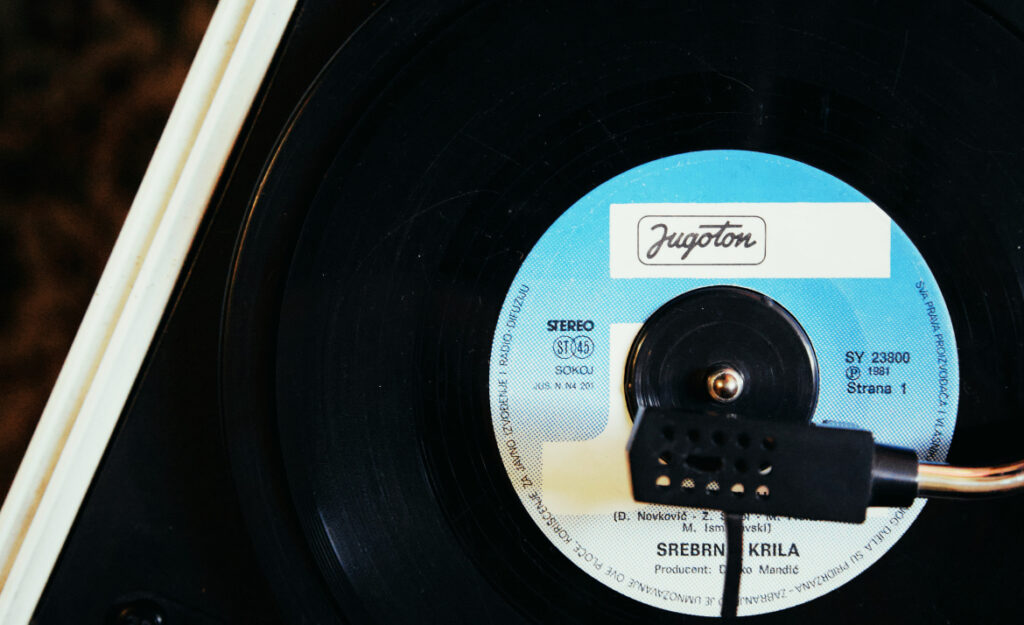
Ever notice your favorite records losing their sparkle? Subtle changes in vinyl sound can be traced to tiny components, like a worn headshell, that need attention. Surprisingly, the solution—headshell replacement—often brings records back to life, making the upgrade more than worthwhile.
Vinyl playback quality hinges on every link in the system, and headshells are no exception. Replacing a worn or misaligned headshell delivers accuracy, eliminates distortion, and gives every album its full clarity and character.
This article is designed to cut through confusion and guide anyone from first-timers to seasoned collectors through headshell replacement, helping vinyl lovers optimize every spin and safeguard record collections.
Pinpointing Why Headshell Swaps Impact Vinyl Playback Every Time
Pinpointing the difference a fresh headshell makes starts with listening habits: does bass lack punch, or do vocals sound smeared? These are sure signs to consider headshell replacement immediately.
Headshells form the direct point of contact between cartridge and tonearm, so even millimeters of misalignment can spell muddiness. Swap out an aging unit, and listeners report “it’s like peeling off a film”—each track regains crispness and energy.
Actionable Rule: Test Old and New Side by Side
A concrete method is testing an old headshell against a new one, using the same cartridge and tonearm. Play a familiar, well-produced track then listen closely for detail and separation.
Vinyl fans describe the improvement as “backgrounds go black, details jump out.” Try both setups and note differences in high-frequency clarity—this exposes subtle but important changes quickly.
Document results with a notebook or app, jotting quick comparisons like “saxophone forward, less hiss.” Go with the headshell and setting that sounds most accurate and enjoyable in your system right now.
Scenario Example: Recognizing Headshell Wear—What Vinyl Fans Say
One collector noticed, “my jazz LP sounded veiled, cymbals dulled.” Upon closer inspection, the headshell’s contacts looked tarnished and the fit was loose, hinting at the need for replacement.
After swapping in a fresh, matching headshell, snap, attack, and nuance returned instantly—a concrete, repeatable change. Watch for similar symptoms, and don’t ignore physical wear; these are signs you’ll find during headshell replacement checks.
Treat every headshell swap as preventative maintenance, not just a response to sound problems. If regular cleaning and alignment don’t fix the issue, plan a headshell replacement session as soon as possible.
| Headshell Type | Material | Weight (grams) | When to Choose | Takeaway Advice |
|---|---|---|---|---|
| Standard Aluminum | Aluminum | 9–10g | Everyday listening, balanced setups | Use if unsure—offers steady tracking for most setups. |
| Lightweight Carbon | Carbon Fiber | 6–8g | DJ use, portable rigs | Go lighter for quick-cueing or portable decks. |
| Heavy Duty Alloy | Alloy Blend | 12–18g | Low-compliance cartridges, heavy arms | Heavier headshells help with difficult tracking scenarios. |
| Detachable Finger Lift | Mixed Metal | Varies | Frequent swaps, easy handling | Simplifies quick changes but check grip strength before buying. |
| Universal Fit | Composite | 8–14g | Unknown tonearms, mixed systems | Try these first if unsure about mounting size or style. |
Selecting the Ideal Headshell for Your Setup from Start to Finish
Selecting the ideal headshell requires matching cartridge weight, tonearm type, and connection. This ensures performance without damaging records or equipment, so always double-check specs before buying.
For most standard turntables, a headshell around 9–10 grams made from solid aluminum provides a dependable baseline. Carefully balancing cartridge and headshell delivers optimal tracking and less wear over time.
Assess Your System Components
First, list your tonearm type (straight or S-shaped), cartridge mount (half-inch or P-mount), and current headshell specs. This checklist makes the shopping process faster and prevents mismatched purchases later.
- Weigh your cartridge and current headshell, combine totals, and compare with your tonearm specs.
- Choose an aluminum or composite model for all-purpose use if unsure about tonearm limitations.
- Heavier headshells (12–18g) pair well with demanding, low-compliance cartridges—think vintage or audiophile rigs.
- Lightweight options are best for portable decks or when faster cueing is needed, such as during DJ use.
- Always check finger lift design—detachable versions speed up swaps, but fixed lifts suit higher-precision installations.
Keep a running list of headshell features you value most: weight, fit, material, and ease of swapping. This prevents decision overload when comparing product specs.
Identify Common Compatibility Pitfalls
Manufacturers use subtle size and shape variations that throw off direct swaps. For example, mismatched pins or non-standard mounting angles cause improper cartridge alignment or dropped signal.
- Check for four-pin universal compatibility before committing to a purchase or swap.
- Double-check mounting collar size matches your tonearm’s locking ring or bayonet fitting.
- Review the datasheet for your arm and headshell—look for “standard half-inch mount” if using most audiophile setups.
- Test fit the headshell before tightening; the connectors should feel snug with no play or wiggle.
- If unsure, bring your old headshell to the record shop and compare units in-hand to ensure proper fit.
Expect minor shimming or tightening adjustments as new headshells settle into tonearms on their first use. Listen for hum or dropouts, and address loose pins immediately to prevent long-term issues.
Executing a Safe and Precise Swap for Maximum Accuracy
Executing your headshell replacement smoothly preserves stylus alignment and record safety every time. Begin by muting your amplifier and gently removing the headshell using the tonearm’s locking collar.
Support both headshell and cartridge to avoid stress on delicate wires, keeping hands steady as you unclip the assembly in one controlled motion.
Maintaining Cartridge Alignment Integrity
Set your turntable on a flat, stable surface before starting. Lay down a lint-free cloth to cushion parts as you work, preventing dust or damage during the headshell replacement process.
If reusing a cartridge, use a marker or notepad to record exact screw, washer, and wire positions. Taking a quick photo before starting helps during reassembly, saving guesswork and time.
Carefully transfer the cartridge from old to new headshell, checking overhang and azimuth. Tighten mounting bolts with a precision screwdriver—too tight can crack the plastic, too loose leads to slippage.
Step Sequence: From Removal to Playback Test
First, unplug your turntable from the wall and disconnect any dustcover if needed. Release the locking collar while supporting the headshell firmly, and gently slide it off without twisting wires.
With the headshell removed, inspect pins and contacts for grime or oxidation and clean as needed with isopropyl alcohol. Assemble the new headshell in reverse order, aligning notches and connectors with patience.
Once installed, carefully check azimuth by lowering the stylus onto a non-record surface and ensure it sits level—adjust as needed. Spin your test LP, listening for clear stereo separation. If satisfied, log the change for future swaps.
Calibrating the Headshell: Tips for Everyday Vinyl Listening
Calibrating your headshell after replacement pays off each time you play a new record. Use a stylus force gauge to fine-tune tracking force for your specific cartridge, aiming for manufacturer-recommended gram settings.
Set antiskate and tonearm counterweight starting from zero, then increase gradually. Tracking correctly ensures records last longer and sound consistently accurate.
Aligning the Cartridge with Precision Templates
Grab a cartridge protractor (paper printouts work too) and align stylus tip as indicated for your turntable. Match both null points and double-check head shell sits parallel to the vinyl’s grooves.
Eyeball both vertical and horizontal alignment to avoid left or right channel dropouts and maintain full stereo imaging. Small adjustments here pay huge dividends in clarity and record longevity.
If the stylus overhang isn’t lining up, carefully nudge the cartridge forward or backward in the headshell slot. Repeat measurements before tightening screws, then recheck before playing your favorite LP.
Practical Checklist: Everyday Headshell and Stylus Care
Wipe headshell contacts with a dry, clean cloth every week to ensure a solid connection. Regular dusting with a carbon-fiber brush keeps debris out of the tonearm area.
Avoid touching the stylus and connectors directly—use tweezers or wooden picks to reposition wires if needed. Every few months, test leads and pins for corrosion or wiggle, swapping if oxidation appears.
On cleaning days, jot notes in a vinyl log about most-used setups and stylus age. This habit makes spotting issues faster and scheduling future headshell replacement more systematic.
Applying Headshell Upgrades for Sonics and Longevity
Applying an upgraded headshell can enhance both soundstage precision and stylus lifespan with each play. For high-end systems, switching to a carbon fiber or alloy model can minimize resonance and boost accuracy.
Every upgrade, however modest, will be audible. Relisten to acoustic guitar tracks or complex jazz passages to catch subtle improvement—which analog fans value most after headshell replacement.
Real-World Example: Swapping for Material-Driven Results
Consider the difference between a basic aluminum headshell and a carbon fiber model. On a basic unit, bass remains slightly smeared, but swapping in carbon fiber tightens the kick drum and expands imaging.
Owners frequently note greater tactile attack—fingers on guitar strings snap, and sax solos bloom. Try playback with both units, then note changes in your listening journal after the switch.
Repeat this test across a few records and playback systems. If an upgrade brings repeatable clarity, you’ll know the investment is working. Don’t hesitate to share your preferences with other vinyl fans for further feedback.
Short Step Sequence: Recording and Evaluating Upgrades
After a headshell upgrade, record a few tracks from the same LP before and after. Use your phone or a digital recorder for consistency, playing back with headphones to catch sonic shifts.
Next, listen for tonal balance, stereo field, and noise floor. Make notes like, “detail improved, noise reduced.” This side-by-side the process gives hard evidence for future swaps.
Once convinced an upgrade delivers, leave a label or note inside your turntable lid. Document the date and upgrade type to make future headshell replacement easier and tracking changes transparent over time.
Conclusion: Refining Your Vinyl Experience Through Headshell Replacement
Every step—choosing, installing, calibrating, and upgrading—delivers immediate, real-world impact on vinyl playback quality. Headshell replacement transforms subtle system fatigue into fresh lifelike performances.
Even small upgrades in headshell material, fit, or precision can bring records back to their best, letting each detail shine. Vinyl systems reward attention to every component, including headshells and their setup.
Embrace headshell replacement as regular care, not a last resort. Build it into your maintenance cycle, and watch your entire record collection stay clear, vibrant, and endlessly enjoyable for years to come.



